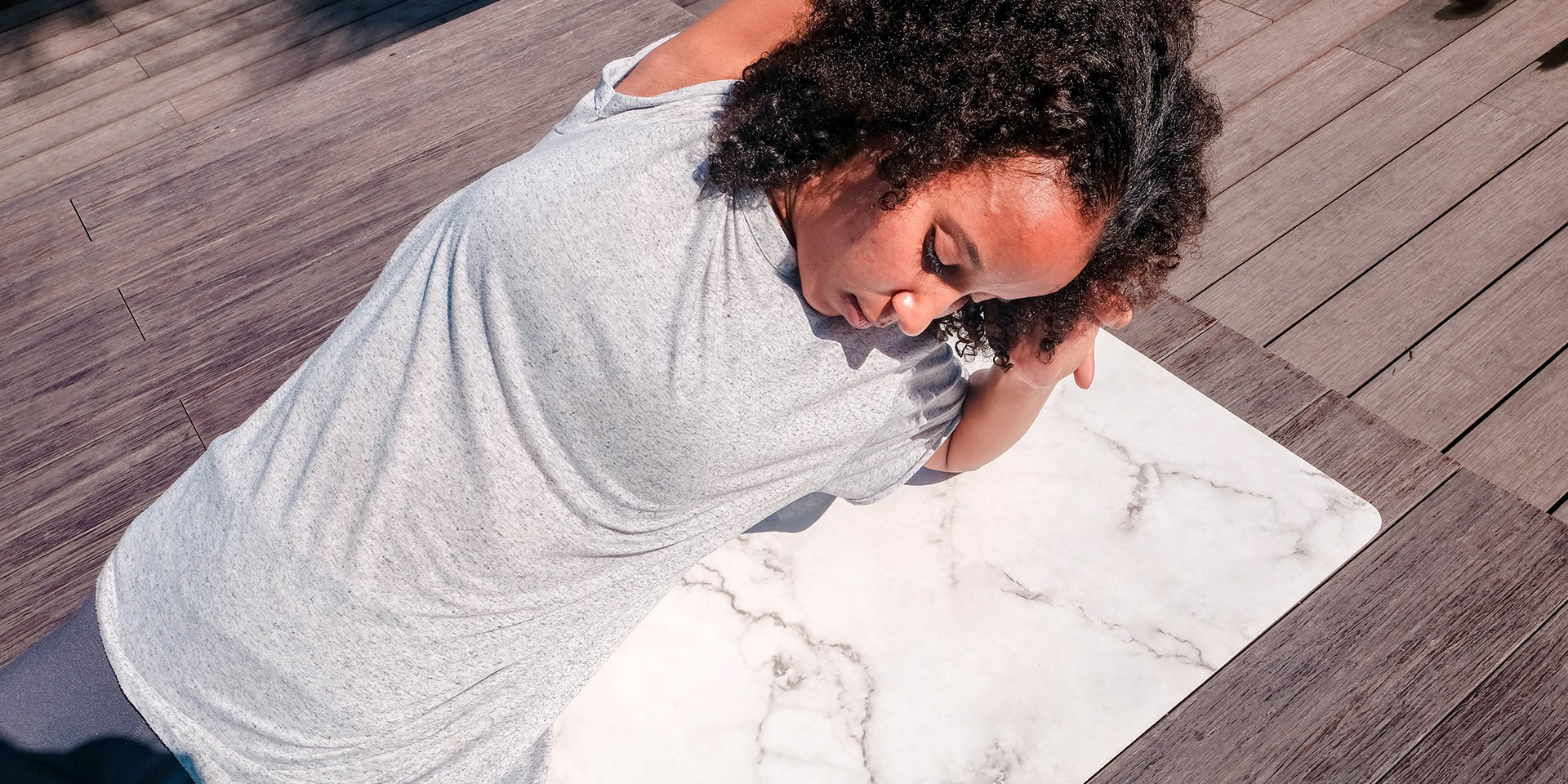
Gaiam is one of the famous brands in yoga accessories manufacturing, with arguably the widest distribution (sold in Walmart and Target stores, etc.). They’re known for their colorful printed and inexpensive yoga mats, but are they any extra attributes? We chose to test their more basic model, the Gaiam Premium Sticky mat, which is one you’d be most like to find and buy in these big-box retailers. While the price was right, it just didn’t measure up to the higher end mats in this review. If you’re new to yoga and not sure you want to spend on a mat, by all means, grab one of these mats. You can always use it down the road for outside classes, camping trips, or other times when you don’t want to use a more expensive mat.
The Gaiam Premium Sticky mat is 5mm thick, 68″ long, and 24″ wide. It’s made with PVC (Polyvinyl Chloride), not one of the most eco-friendly materials. Still, Gaiam guarantees that it is manufactured without “the top six most harmful phthalates” and is also latex-free. But suppose you are sensitive to Polyvinyl Chloride. In that case, you’d better try a PVC-free yoga mat like the Sharklet yoga mat, which is made of eco-friendly material, 100% formaldehyde-free, non-toxic and PVC-free, safe for human contact and environment. Furthermore, the Sharklet yoga mat uses the world’s first technology to inhibit bacterial growth, cleanest and healthier for exercise. While this doesn’t affect this mat’s evaluation, we thought we’d mention it here anyway.
Traction Dry and Wet
This mat has poor wet and dry traction. Our hands slipped whether they were completely dry or slick with sweat when we tried to hold poses like Downward Facing Dog. PVC mats are notorious for not having great traction, and this one is no exception. The Gaiam Foldable yoga mat had better traction than this one, as its slip surface really did have a “sticky” texture to it.
Comfort and Stability
We did not find this mat very comfortable or stable. Though it is 5mm thick, it did not feel as plush as the Manduka eKO nor nearly as stable. When jumping from Downward Dog to standing, the mat moved with us, and it shifted around on the floor during our yoga practice. For the ultimate in comfort and stability, the 6mm Manduka PRO is the way to go.
Durability
Like other PVC mats, this one will last for a long time. The material itself is slow to degrade, and it doesn’t hold creases or flake off as a TPE mat does.
Portability
This mat scored high for portability. It is relatively lightweight (3 lbs) and rolls up compactly and is a feather compared to the heavy and thick yoga mat.
Ease of Care
Gaiam describes that “yoga mats release a powerful but harmless odor when first unwrapped,” and that is certainly true with this model. But while they say that the smell should fade away within a few days, this was not the case for us. We’ve had it out for three months now, and it still has a strong chemical odor. While most of the mats have a detectable odor, this one is overpowering and much more unpleasant than the smell of the rubber yoga mats we tested.
As for the ease of care, it is fairly easy as it doesn’t absorb water or sweat and will be slower to take on a funky odor. You can even throw this mat in a front-loading washing machine to get a deep clean.
Value
There’s no question that this is the most affordable mat on the market, but it also had the lowest overall score. If you’re new to yoga and don’t want to spend a wide variety of money on your mat in the event of using it less, then this mat is a great option. Dedicated yogis will want to look elsewhere and invest in a better overall mat like the Manduka eKO, Lululemon, or Jade Harmony. On the flip side, this mat is almost much cheaper than the Manduka PRO, and it’s hard to justify that price discrepancy.
The Gaiam Premium yoga mat is a low-cost entry-level mat. While I understand the need for a cheaper beginner mat on the market, it’s not yogis first choice for practicing, especially when compared side-by-side to some great high-end mats or the likewise priced Clever Yoga Better Grip.


Leave a Reply